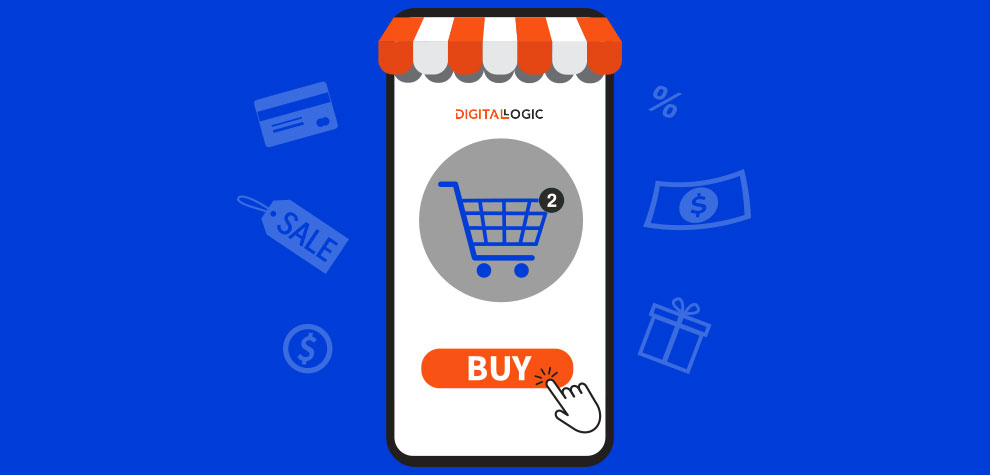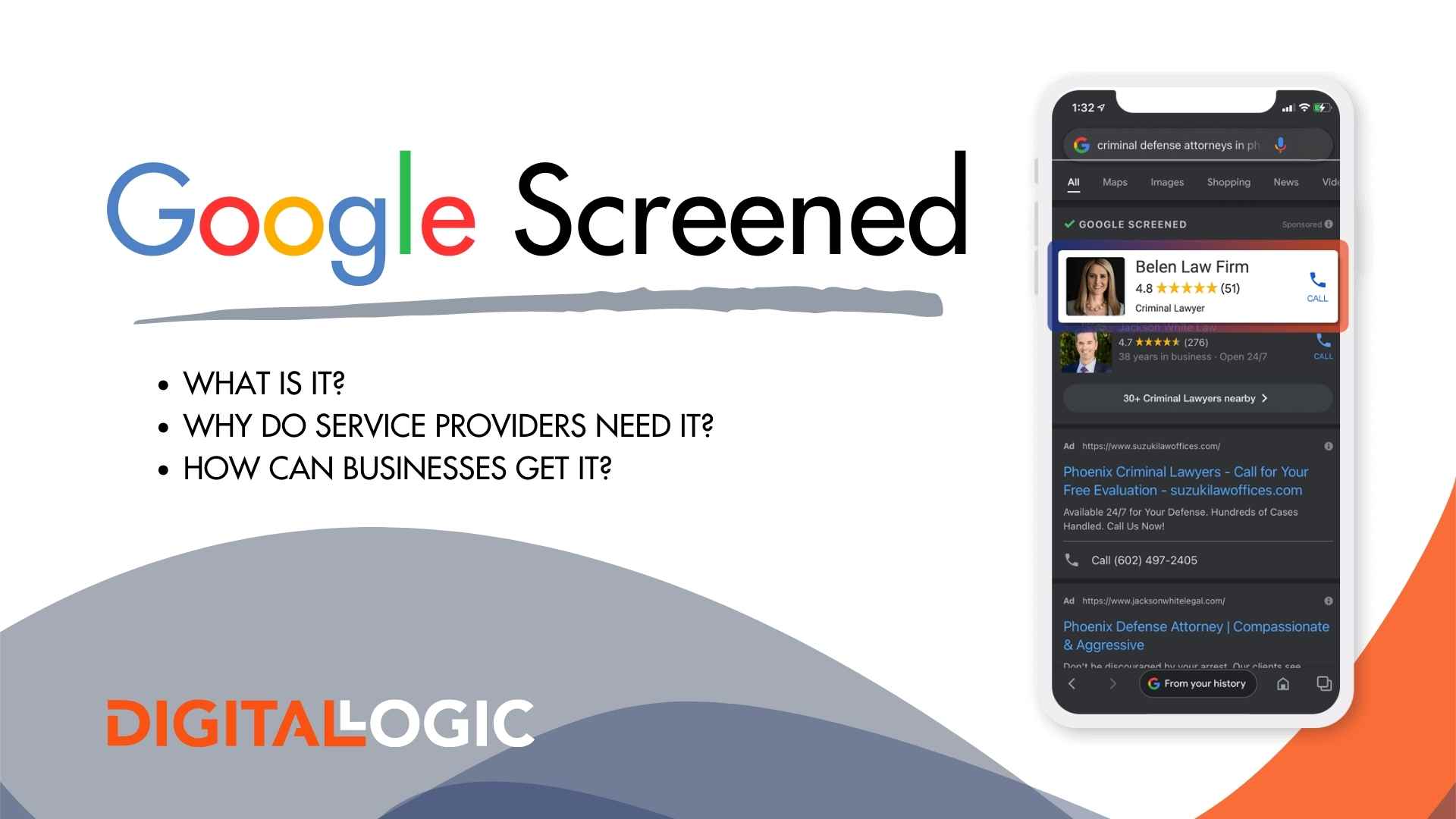Before the internet and thus the ability to search for products on Google or social media platforms, newspapers and garage sales were the closest thing consumers had to an online marketplace. But thanks to modern technology, business owners can connect with local buyers and sell items online via a branded website, online selling sites, or online marketplaces.
As a leading professional digital marketing company, we understand the importance of choosing the right eCommerce platform to showcase and sell your products or services online. With the e-commerce landscape evolving rapidly, this comprehensive guide aims to equip small business owners with a handpicked selection of the top online selling sites to maximize reach, boost sales, and flourish in the digital marketplace.
Whether you own an established business and are looking to expand your online business or are a budding entrepreneur seeking the perfect platform to launch your eCommerce business, Digital Logic is here to steer you toward success.
Top Online Selling Sites for Small Businesses
Table of Contents
Toggle
eCommerce has completely changed the game, leveled the playing field, and opened the door for small vendors to sell products online in a completely online marketplace. And we’ve done the digging for you. Regardless of your objective or what you’re selling, there’s an online selling site available to meet your needs.
Ready to sell stuff online? Here are the best options to start selling online:
Sell Online With an eCommerce Platform
Selling online through an eCommerce platform opens a world of unparalleled opportunities, providing a virtual storefront accessible to your target audience 24/7.
The advantage of designing your own sales site is that the profits are yours. For the most part, there isn’t a large chunk taken out of your budget each month to cover the monthly store fees, the service fee, the transaction fee, or the listing fee. You can choose your own business model and your own shipping structure, as well.
Building your own eCommerce store will come with challenges, however, especially if you aren’t tech-savvy.
One of the biggest hurdles to sell online via your own store is that you have to market your own brand and generate traffic to your own business account. However, with a little help from a professional SEO agency, you can expedite this process. Many small business owners are choosing to outsource SEO services to maximize their business potential.
At Digital Logic, we recognize the potential that eCommerce platforms hold for small businesses to expand brand reach and boost sales. Our SEO expertise and website development services are tailored to meet the unique requirements of small businesses in the competitive online marketplace.
By optimizing your eCommerce website with our advanced SEO strategies, we ensure that your products or services gain more online visibility and rank higher in search engine results. This attracts more organic traffic and potential customers.
Additionally, our skilled website development team crafts customized, user-friendly, and visually appealing e-commerce websites that instill trust and confidence in consumers. With seamless navigation, responsive design, and a focus on conversion optimization, our marketing team creates a compelling online shopping experience for your target audience.
If your goal is to sell things online, with Digital Logic’s help, your small business can not only establish a strong online presence but also compete effectively in the competitive e-commerce landscape, driving growth and success like never before.
Sell Online With Shopify
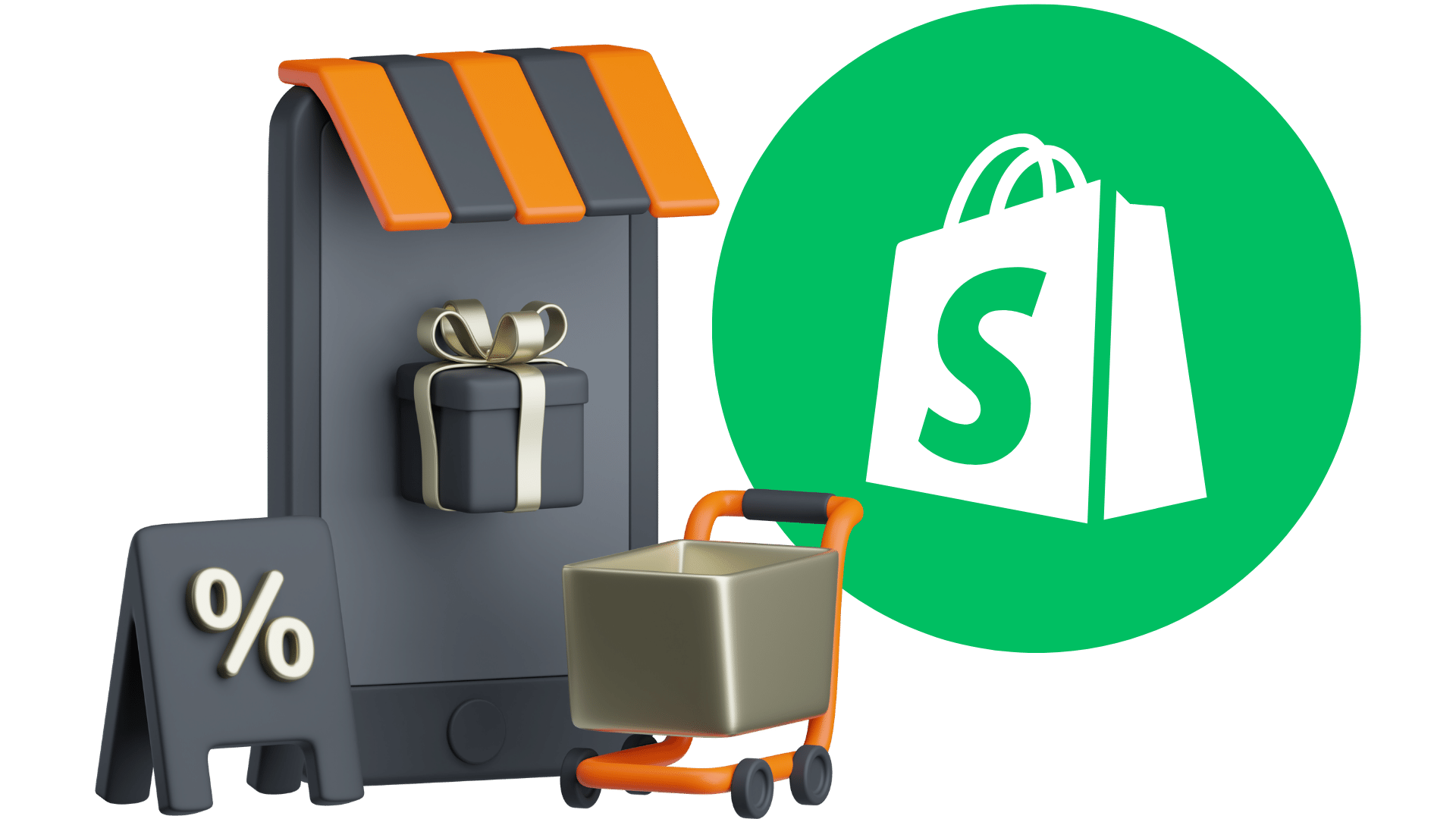
Selling online through Shopify opens up a world of possibilities for businesses of all sizes.
If you’re opting for a DIY website option to sell things online, we highly recommend Shopify for its user-friendly interface, versatility, and robust features. With Shopify’s intuitive setup and somewhat-customizable templates, business owners can create a fully functional online store that aligns with your brand identity.
Shopify’s secure payment gateways and reliable customer support ensure a smooth shopping experience for consumers. This fosters trust and loyalty.
Whether you’re a startup business or an established enterprise, Shopify’s scalability empowers your business to grow and adapt fairly easily.
If you’re looking to DIY your own site to sell items, Shopify is the easiest to use right now. This e-commerce platform is also the most trusted. Shopify offers various marketing tools and apps to help with abandoned shopping cart recovery.
Shopify Statistics
Here are a few staggering statistics about Shopify:
- There are more than 800,000 stores through Shopify.
- In 2019, Black Friday and Cyber Monday sales brought in 1.5 Billion dollars for Shopify stores.
- Shopify has paid over $850,000 to resolve security issues.
Sell Online With Shopify Alternatives
Just because Shopify has become a household name in the online selling sites industry, that doesn’t mean it’s the only one available.
Hundreds of e-commerce platforms exist, each with its own unique feature sets, pricing, and appeals. With the variety of several Shopify alternatives available for small businesses, we know the task of choosing one for your e-commerce business can be daunting.
Best Shopify Alternatives
Here’s a list of the top 10 Shopify alternatives to sell items online:
Other Online Selling Platforms
The “sell anything” style online marketplace platforms listed below are certainly the most well-known selling sites for businesses. Most can accommodate just about anything you want to sell (assuming that it is legal).
Sell Products on Amazon
With Amazon, you’re opting into a very large marketplace that a lot of buyers trust. However, the massive customer base comes with its own drawbacks: higher fees (in some cases, hidden fees) and more competition.
When selling on Amazon, business owners should maintain the thought process: “I’m getting a smaller piece of a bigger pie.” Your piece may be small in relation to the whole pie, but the pie is much larger than normal. So, you’re still getting a good amount.
The overwhelming number of people looking to buy on Amazon is certainly a plus and one of the many reasons it’s one of the best sites to sell stuff online!
Also, like many other online stores, Amazon uses an algorithm that will recommend your products to those who may be interested in them based on search history. Almost anyone selling almost anything should be able to run a business on Amazon. You just need to ensure that your final sale price is competitive enough to be a contender.
If you’re running a small business, you may find this challenging, since others can distribute in bulk. We’ll review several online selling sites, so sit tight, small business owners!
Sell Products on eBay
The OG of online selling sites, eBay, has been around since 1995! There’s no need to deny the power of selling on eBay, seriously.
However, you should be aware of the selling fees, payment processing fees, and other hidden fees (that only continue to rise).
Ebay charges a non-refundable fee to list an item. They then charge a non-refundable fee to insert the same product in another category. Once the item sells, they impose a “final value fee.” This is essentially Ebay’s commission based on the selling price, as well as the shipping costs. The final value fee will vary based on your product, its category, how many categories it’s listed in, and shipping.
Both Ebay’s seller base and customer base are comparable to Amazon, but customers trust eBay less than they trust Amazon.
Also, eBay is known for its “bargains.” Typically, customers browsing this selling site are looking for great deals.
So, you’ll have a lot of competition paired with a low-profit margin on eBay.
Sell Products on Bonanza
This fast-growing online selling marketplace is relatively new to the e-commerce industry but is quickly becoming a popular eBay alternative. It hosts over 22 million items, and this number is exploding rapidly. Possibly because Bonanza is one of the easiest-selling platforms to use.
Bonanza is similar to Amazon and eBay, where the sky’s the limit to what you can sell. And according to Bonanza, items that are quirky or unique tend to sell better. In fact, their slogan is “Find everything but the ordinary.” So, if you’re a super niche business, this may be just the e-commerce platform for you!
Also, Bonanza doesn’t make money until the seller does. For this reason, you’ll see much higher profit margins. It offers free listings, and the average fee per sale is as little as 3.5%, which is considerably less than Amazon and eBay.
Although Bonanza’s monthly traffic is lower than Ebay’s and certainly Amazon’s, the ratio of shoppers to sellers on the platform is much higher: 1,300 to 1 on Bonanza versus 10 to 1 on eBay.
This means much less competition as a seller and more chances for buyers actually to see your products–perfect for small businesses!
Online Marketplaces for Handmade Items

For those of you looking to turn your hobby into an e-commerce business, you can certainly make money when you sell your handmade items online in your own store. People love unique, handmade products and crafts.
Since the explosion of e-commerce platforms, crafters all over the world are setting up their own online shops to sell handmade items. They’re making good money doing so, too.
Learning how to transform your love of crafts into a money-making business can be a bit tricky, but these online selling sites for crafters should help you get started!
Sell Online With Etsy
The Etsy platform caters to a much more niche market than eBay or Amazon, or even Bonanza. It’s a tried and true, well-known online selling site, except it’s targeted to those looking for handmade items. Etsy’s seller fees are seriously the most simple and straightforward out of all the selling websites we’ve come across. The listing fee is 20 cents per listing. When you sell an item, Etsy imposes a 5% transaction fee and a 3% plus 25 cent processing fee. These fees, although they seem small, can definitely add up if you aren’t taking them into account when pricing your items. Etsy is one of the most well-known and respected sites for crafters looking to sell things online. Their straightforward fees, ease of use, and good standing with the online shopping population make the platform one of the best online selling sites for crafters. There is one caveat. Once Etsy accounts reach a certain number of sales, Etsy forces sellers to opt into a paid ads program. So, while Etsy is one of the best sites to sell homemade merch for smaller businesses, many business owners leave the online selling platform once they are forced to start paying Etsy for unwanted ads.Sell Online With ArtFire
Another good site to sell crafts is Artfire. This platform specializes in both handmade and vintage goods. It also has a good number of digital media art and craft supplies. One characteristic unique to Artfire is that there are no ads on shops or listings. This can be either a pro or a con. It’s certainly a pro for new business owners looking to sell online that simply don’t have the budget for paid ads. It takes that aspect of competition away – completely free. On the flip side, if you want to invest in Artfire ads to jumpstart your online selling business, you don’t have the opportunity to do so. However, you can always talk to a PPC agency about getting search ads directed to your link. Unlike Etsy, Artfire does charge a monthly fee to keep your shop open. Although this isn’t a reason to use the platform, it does instill confidence in buyers that the online business they’re purchasing from is likely here to stay.The Best Online Selling Sites to Sell Stuff Locally
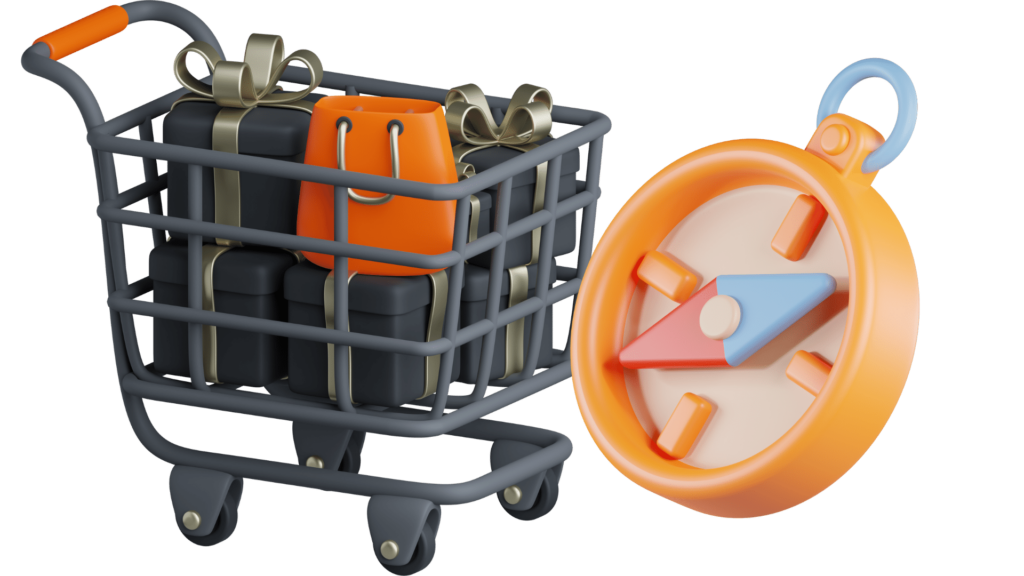
These are similar to the “sell anything” online marketplace sites. If you’re simply trying to sell old, used stuff, trying to declutter your home, or if you don’t want to deal with a shipping fee, a local marketplace may be a good option for you.
Most of these are free to use but aren’t quite as professional, if you will, as the other online selling sites we’ve mentioned.
Proceed with caution.
Sell Online With Facebook Marketplace
The infamous Facebook Marketplace was introduced in October of 2016 by Facebook, of course. Facebook Marketplace aims to bring people in communities together to both buy and sell stuff online. One exciting aspect of Facebook Marketplace is that they’re slowly starting to support eCommerce merchants, as well. They’ve partnered with online selling platforms, such as WordPress and Shopify, to help facilitate online merchant presence on Facebook Marketplace. Facebook Marketplace is definitely one of the best – and most popular – websites to sell any used item to local buyers, from an old car to an old couch. All you have to do to start selling stuff online is create a new listing on the marketplace section of your Facebook app, add photos of your product, enter the desired price, and publish the listing. Local potential buyers will see your listing and message you if they’re interested. One of the best parts about Facebook Marketplace is that there aren’t as many fees involved (like a monthly maintenance fee for your online storefront, for example) when it comes to selling things online. There aren’t any listing fees, but Facebook Marketplace enforces strict requirements and guidelines in order to remain a merchant there. Facebook only charges a 5% selling fee per shipment. You get to keep the rest of the money from the item sold.Sell Online With Craigslist
This platform is more or less a forum targeted to merchants and buyers. The major downside of Craigslist is there’s not much if any, rule enforcement. Unlike other online marketplaces, rampant scams frequently appear, and both sellers and buyers operate in a very “high-risk” environment. So basically: If something goes wrong, you’re on your own. This platform is best suited for those who want to sell and buy in person.Should You Create Your Own Online Selling Site?
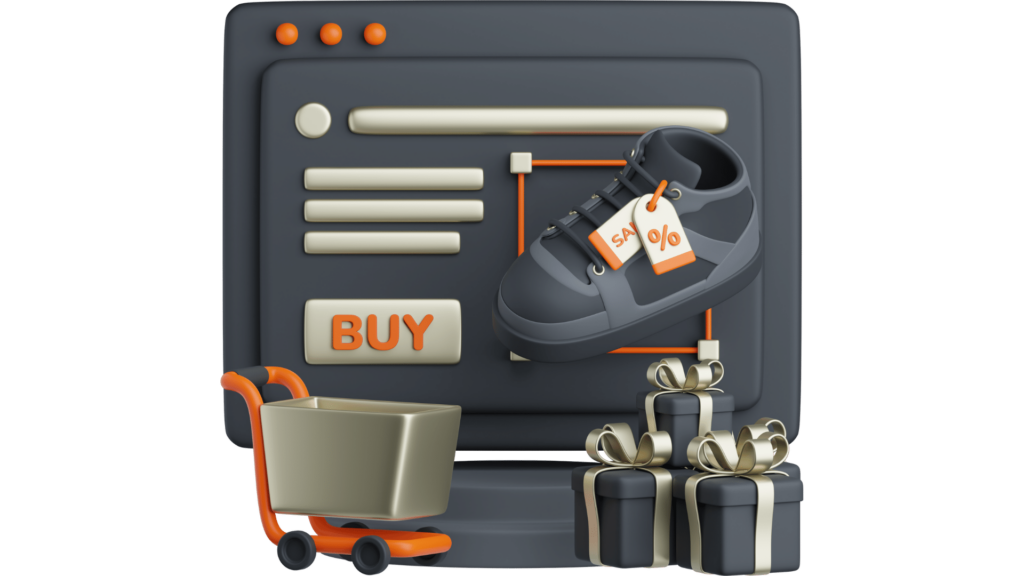
Honestly, the best websites to sell products are ones where you can own and operate your own online store. Sure, you can maintain the listing on the platforms we’ve listed above. But, having a website that you own means that you won’t have to pay fees, which means that you can keep all the proceeds. No middleman.
Here are a few tips on how to get started:
Start with a Business Plan for Selling Online
The old saying, “a goal without a plan is just a wish,” holds true. You’ll need to plan before you jump into starting your own website. You’ve got a taste of what you should consider just by reading this post!
You should also consider things like:
- How much time does it take to produce or manage inventory?
- What’s your break-even price?
- How much does each item cost to make or buy?
- Are you going to offer wholesale? If so, do you have enough profit margin to accommodate that?
Start Building Your Own Online Store
Once you’ve nailed down your plan, you can now start the process of creating your online store.
Purchase a Domain Name For Your Online Store
You’ll want to start by purchasing a domain name. The most simple way to do this is through GoDaddy.
Choose an Online Store Builder for ECommerce Selling
Next, you’ll choose an online store builder. You’ll want to choose one that has eCommerce functionality.
What does eCommerce functionality include?
An eCommerce website:
- Gives customers payment options,
- Includes a shopping cart with which customers can buy items,
- Has an SSL certificate,
- Comes with shipping options built-in (or available through an app), and
- Is mobile-friendly.
For WordPress users (our preferred platform), there are plugins that will quickly turn your existing website into an eCommerce site. Also, you can use external package tracking tools to improve your order journey.
For more information, check out our post: Website Design Best Practices.
But, if you’ve never built a website before and aren’t very tech-savvy, you may want to hire a professional website developer to do the heavy lifting on your behalf.
Add Photos, Text, and Products to Your Online Store
At this point, you’re on the home stretch. You’ll want to be sure you include killer listing pages with the best pictures to showcase your products or services. The goal is obviously to get your audience to click the buy button. What we, in the digital marketing world, call “a conversion.”
Attract Consumers With Social Networking
Once you’ve built your online store, you’ll need to bring people to it. Then, you’ll also need to convert them from “lurkers” to buyers! The easiest way to start is with a social media campaign.
Even if you just start with one network, you need to stay active, post regularly to social media accounts, and respond to consumers that mention your business.
Not sure which social media network to post on?
Our post, the top social media sites for businesses can help.
Attract Consumers With SEO Marketing
One good way to do this is to work keywords into your text. This helps search engines understand what your website and pages are all about. However, simply adding in keywords isn’t going to help much if you don’t understand how search engine optimization works.
We provide an entire post dedicated to what an SEO company does if you’re interested in growing organic traffic for your online selling site, which will inevitably help you get more online sales.
Best Online Selling Sites FAQ
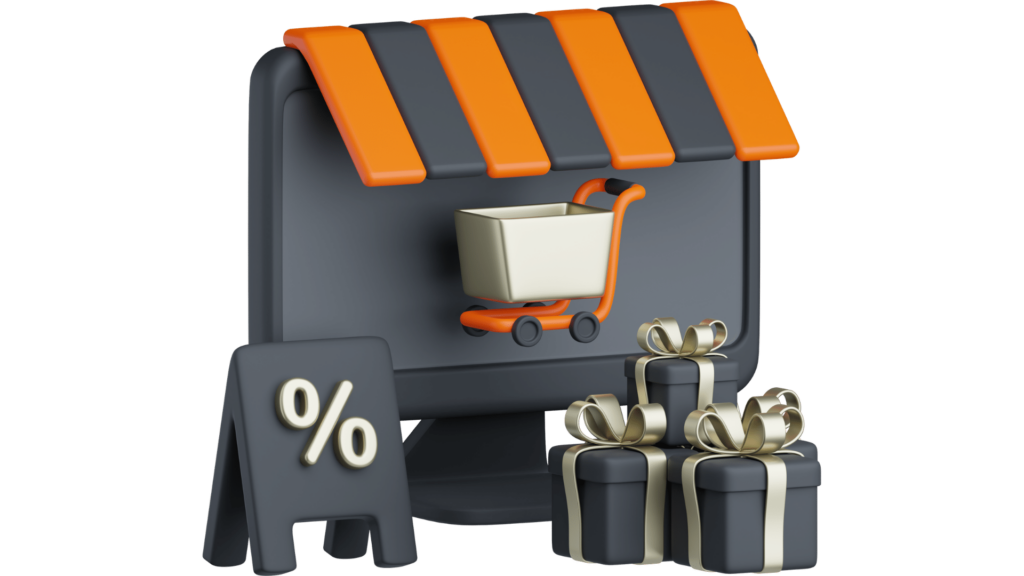
What are the Best Websites to Sell Stuff Online?
There are many online marketplaces and e-commerce platforms that let you sell items online and take online payments for the items you sell. You could consider Shopify, if you wanted to create your own website, Bonanza, eBay, Facebook Marketplace, Craigslist, and many others.
What is the Best Online Selling Site for Clothing?
If you want to sell clothing products online, the best sites for this are Facebook Marketplace, Etsy, Nextdoor, eBay, and Ruby Lane.
What is the Best Platform for Individual Sellers?
eBay, Bonanza, Etsy, Shopify, and Artfire are all great places to sell stuff locally as well as across the United States. You will have to pay selling fees to use these platforms, but if you’re selling things online, you can use these platforms to get your brand out there before opening a brick-and-mortar location.
Boost Online Sales with Digital Marketing Services from Digital Logic
Whether you want to clean out the clutter and sell locally, expand your brick-and-mortar retail store, or break into the eCommerce scene, you can find an online selling site that works for your business!
No matter what you’re selling, you have several online marketplace platforms right at your fingertips. With just a few clicks, you can start selling products. Where you choose to sell your product online is completely up to you. While the huge reach and broad appeal of sites like Amazon and eBay make them the obvious choice for some, those who are looking to actually grow their businesses may want to look elsewhere.
If you’re beyond the point of huge transactions or listing fees and want to sell your products on your own online store, give us a call!
Digital Logic is a full-service marketing agency. We offer eCommerce marketing services, free SEO audit services, and affordable prices. At Digital Logic, we can help you map out the best plan of action for your growing business.
